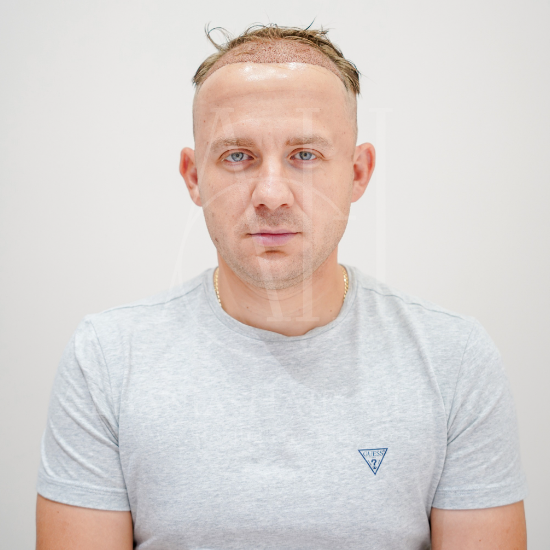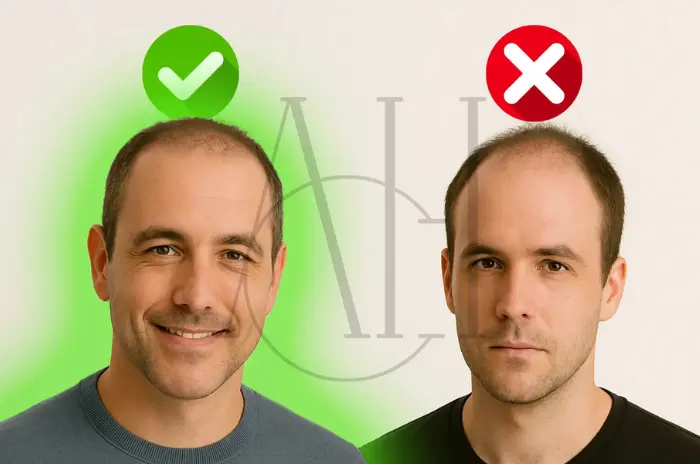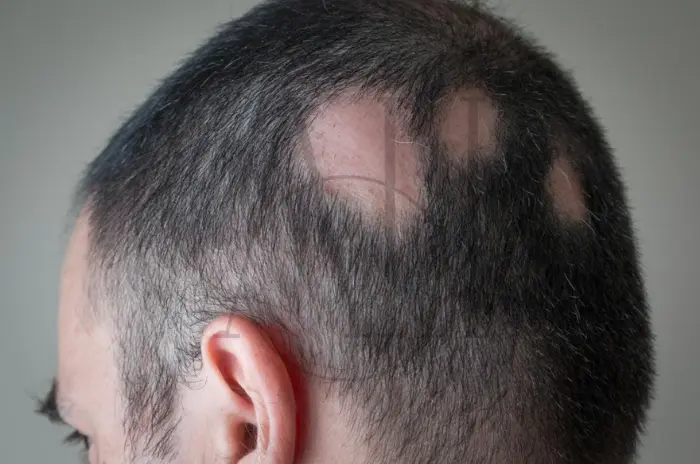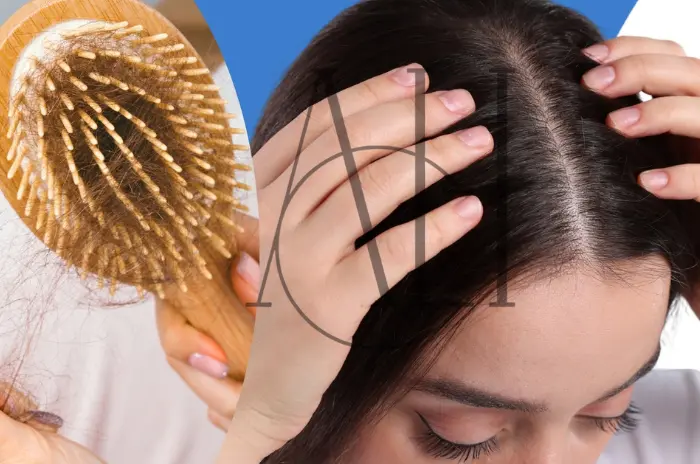La perdita dei capelli colpisce milioni di persone in tutto il mondo, spingendo molti a cercare soluzioni efficaci per il loro ripristino. Le procedure tradizionali di trapianto di capelli, pur essendo efficaci, spesso prevedono l’uso di aghi per l’anestesia, che possono essere fonte di ansia e disagio per i pazienti. L’introduzione del trapianto di capelli senza aghi è un approccio rivoluzionario che sta trasformando l’esperienza del paziente e stabilendo nuovi standard nel campo del restauro dei capelli.
Table of Contents
ToggleQuali sono i vantaggi del trapianto di capelli senza ago?
Il trapianto di capelli senza aghi offre diversi vantaggi rispetto ai metodi tradizionali:
-
Maggiore comfort: Eliminando gli aghi, i pazienti provano un disagio significativamente minore durante la procedura. Questo è particolarmente vantaggioso per chi soffre di fobia per gli aghi.
-
Riduzione dell’ansia: L’assenza di aghi allevia le paure comuni associate alle procedure mediche, rendendo l’esperienza del paziente più rilassata.
-
Trauma tissutale ridotto al minimo: I metodi di anestesia senza aghi riducono il danno ai tessuti nel sito di iniezione, favorendo una guarigione più rapida e riducendo il disagio post-operatorio.
-
Erogazione uniforme dell’anestetico: I sistemi di somministrazione avanzati garantiscono una distribuzione uniforme e costante dell’anestesia, migliorandone l’efficacia.
Qual è il tempo di guarigione del trapianto di capelli senza ago?
Il processo di guarigione dopo un trapianto di capelli senza ago è paragonabile a quello dei metodi tradizionali. Tuttavia, a causa della riduzione del trauma tissutale dovuto all’anestesia senza ago, alcuni pazienti possono sperimentare:
-
Recupero più rapido: La somministrazione di un’anestesia meno invasiva può portare a un periodo di recupero più breve.
-
Gonfiore e lividi ridotti: L’interruzione minima dei tessuti si traduce spesso in una riduzione del gonfiore e dei lividi post-operatori.
È fondamentale seguire le istruzioni di assistenza post-operatoria fornite dal chirurgo per garantire una guarigione ottimale.
Quanto è doloroso un trapianto di capelli?
La percezione del dolore varia da individuo a individuo, ma le procedure tradizionali di trapianto di capelli comportano in genere un certo disagio, soprattutto durante la somministrazione dell’anestesia locale. L’introduzione di tecniche senza ago ha ridotto significativamente questo disagio, rendendo la procedura più tollerabile per la maggior parte dei pazienti. Secondo Cosmedica Clinic, l’anestesia senza ago può ridurre il dolore fino al 70%.
Come ridurre il dolore e il disagio?
Per ridurre al minimo il dolore e il disagio durante le procedure di trapianto di capelli:
-
Anestesia senza aghi: Utilizzando dispositivi ad alta pressione, l’anestesia viene somministrata senza aghi, riducendo il disagio iniziale.
-
Consulenza pre-procedura: Informare i pazienti sul processo aiuta ad alleviare l’ansia.
-
Cura post-operatoria: Seguire le procedure post-operatorie prescritte può attenuare il disagio durante il recupero.
Albania Hair Clinic – Trapianto Capelli in Albania (@albaniahairclinic)’in paylaştığı bir gönderi
Come funziona il trapianto di capelli senza ago?
L’anestesia senza aghi impiega dispositivi specializzati che erogano agenti anestetici attraverso la pelle utilizzando iniettori ad aria o a getto ad alta pressione. Questo metodo permette all’anestetico di penetrare nel cuoio capelluto senza l’uso di aghi, addormentando efficacemente l’area per la procedura di trapianto.
Anestesia senza ago per le tecniche DHI e FUE
Entrambe le tecniche di Impianto Diretto di Capelli (DHI) e di Estrazione di Unità Follicolari (FUE) possono essere eseguite con anestesia senza ago. Questa integrazione migliora il comfort del paziente nelle varie metodologie di trapianto di capelli.
I vantaggi dell’anestesia senza ago
-
Maggiore comfort per il paziente: Elimina il disagio associato alle iniezioni con ago.
-
Riduzione dell’ansia: Particolarmente utile per i pazienti che soffrono di fobia da ago.
-
Effetto anestetico uniforme: Assicura un intorpidimento uniforme dell’area del cuoio capelluto.
L’anestesia senza aghi elimina completamente l’uso degli aghi?
Sebbene l’anestesia senza aghi riduca in modo significativo l’uso degli aghi, alcune procedure possono ancora richiedere un minimo coinvolgimento degli aghi per un’anestesia più profonda o per fasi specifiche. Tuttavia, l’utilizzo complessivo degli aghi è drasticamente ridotto, migliorando il comfort del paziente.
Perché l’anestesia per la chirurgia dei capelli è essenziale?
L’anestesia nella chirurgia dei capelli è fondamentale per:
-
Garantisce il comfort del paziente: Previene il dolore durante l’estrazione e l’impianto dei follicoli piliferi.
-
Facilita la precisione: Permette ai chirurghi di eseguire l’intervento con maggiore precisione senza che il paziente si muova a causa del disagio.
Due semplici passi per un trapianto di capelli senza dolore
-
Consultazione pre-procedura: Discuti con il tuo chirurgo le opzioni di anestesia, compresi i metodi senza ago.
-
Piano di anestesia personalizzato: Sviluppa un approccio personalizzato che tenga conto delle preferenze del paziente e della sua storia clinica per garantire il massimo comfort.
Come si differenzia dall’anestesia tradizionale
L’anestesia tradizionale prevede iniezioni di aghi per somministrare gli agenti anestetici, che possono causare disagio e ansia. Al contrario, l’anestesia senza aghi utilizza sistemi ad alta pressione per somministrare l’anestesia senza aghi, migliorando il comfort del paziente e riducendo lo stress legato alla procedura.
Il metodo Comfort-In senza ago
Il sistema Comfort-In è un iniettore senza ago che utilizza un meccanismo a molla per somministrare l’anestesia attraverso la pelle con un getto ad alta pressione. Questo metodo è rapido, efficace e riduce al minimo il disagio del paziente.
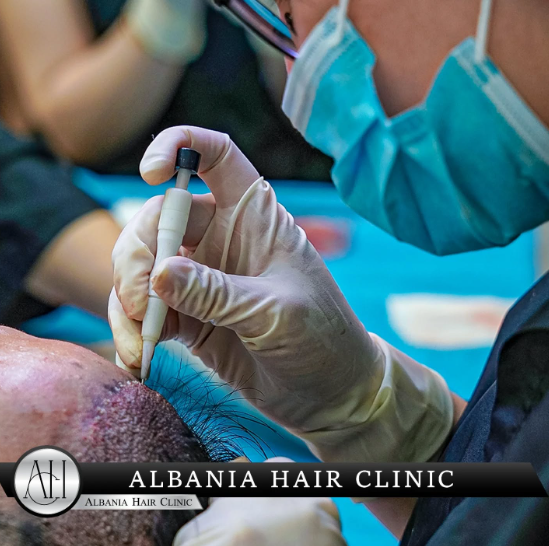
Posso ottenere un trapianto di capelli senza aghi al 100%?
Il raggiungimento di un trapianto di capelli completamente senza aghi dipende dalla clinica e dai requisiti specifici della procedura. Sebbene molte fasi possano essere eseguite senza aghi, alcuni aspetti possono richiedere un uso minimo di aghi. È importante consultare il proprio chirurgo per capire quali sono le opzioni senza aghi disponibili.
Il tuo trapianto di capelli senza aghi
Optare per un trapianto di capelli senza ago può migliorare notevolmente il tuo comfort e la tua esperienza complessiva. Discutere di questa opzione con la clinica che hai scelto ti permetterà di capire in che modo la clinica stessa può adottare un approccio senza aghi adatto alle tue esigenze.
Come viene eseguito un trapianto di capelli senza ago?
La procedura prevede l’utilizzo di un dispositivo senza aghi per somministrare l’anestesia locale, seguita dalle fasi standard di estrazione e impianto dei follicoli piliferi. La differenza principale sta nel metodo di somministrazione dell’anestesia, che migliora il comfort del paziente fin dall’inizio.
Chi può sottoporsi a un trapianto di capelli senza ago?
La maggior parte dei soggetti idonei alle procedure tradizionali di trapianto di capelli può optare per l’anestesia senza ago. Tuttavia, è essenziale consultare un chirurgo qualificato per determinare l’idoneità in base ai fattori di salute individuali e agli obiettivi di restauro dei capelli.
L’anestesia senza ago è efficace?
Sì, è stato dimostrato che l’anestesia senza ago è efficace per addormentare il cuoio capelluto durante le procedure di trapianto di capelli. Studi clinici hanno dimostrato la sua efficacia nel fornire un sollievo dal dolore paragonabile a quello dell’anestesia tradizionale con ago.
Proverò dolore durante il trapianto di capelli senza ago?
Sebbene l’anestesia senza aghi riduca notevolmente il disagio, alcuni pazienti possono comunque avvertire lievi sensazioni durante l’intervento. In generale, il livello di dolore è notevolmente inferiore rispetto ai metodi tradizionali.
Proverò dolore dopo il trapianto di capelli senza ago?
Il disagio post-operatorio varia da individuo a individuo, ma in genere è minimo. Seguire le istruzioni per la cura post-operatoria, come ad esempio assumere gli antidolorifici prescritti ed evitare attività faticose, può aiutare a gestire efficacemente qualsiasi disagio.
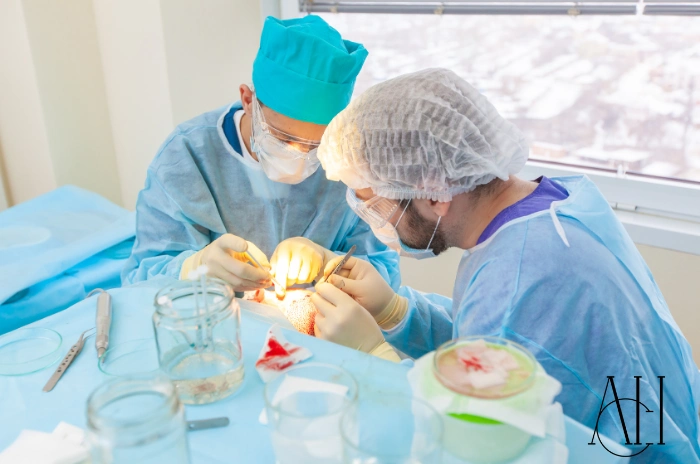
Come posso ridurre il dolore dopo il trapianto di capelli?
Per ridurre al minimo il dolore post-operatorio:
-
Segui le istruzioni per la cura successiva: Segui le linee guida fornite dal tuo chirurgo per quanto riguarda la cura del cuoio capelluto e le restrizioni all’attività.
-
Usa i farmaci prescritti: Assumi gli antidolorifici e gli antinfiammatori come indicato.
-
Applicare impacchi freddi: Applicare delicatamente impacchi freddi può ridurre il gonfiore e alleviare il disagio.
Cosa pensare prima di sottoporsi all’anestesia senza ago?
Prima di optare per l’anestesia senza ago, considera quanto segue:
-
Consultazione con il chirurgo: Discuti con il tuo chirurgo la tua storia clinica e le tue eventuali preoccupazioni per assicurarti che l’anestesia senza aghi sia un’opzione adatta a te.
-
Capire la procedura: Familiarizza con il funzionamento dell’anestesia senza ago, con la sua durata e con ciò che puoi aspettarti durante e dopo l’intervento.
-
Tecnologia della clinica: Assicurati che la clinica utilizzi dispositivi affidabili e approvati dalla FDA come Comfort-In o MadaJet, noti per la loro efficacia.
-
Implicazioni di costo: Sappi che questa tecnica potrebbe comportare un costo leggermente superiore rispetto ai metodi tradizionali, ma molti ritengono che il miglioramento del comfort valga l’investimento.
Qual è la procedura per l’anestesia senza ago?
Il processo prevede diverse fasi precise per garantire un’anestesia sicura ed efficace:
-
Preparazione: Il cuoio capelluto viene pulito e preparato per l’anestesia.
-
Applicazione: L’iniettore senza ago eroga un getto sottile di soluzione anestetica attraverso la pelle grazie all’alta pressione.
-
Assorbimento: L’anestetico si diffonde nel tessuto, addormentando l’area interessata in pochi secondi.
-
Applicazioni multiple: Il chirurgo può somministrare l’anestesia in diversi punti dell’area del donatore e del ricevente per garantire una copertura completa.
Questo processo richiede in genere solo pochi minuti e consente di iniziare l’intervento quasi immediatamente.
I tuoi vantaggi con l’anestesia senza aghi
Scegliere un trapianto di capelli senza aghi ti offre notevoli vantaggi:
-
Esperienza indolore: Il disagio è minimo o nullo durante l’applicazione dell’anestetico.
-
Nessuna ferita da ago: Riduzione del rischio di contusioni interne o traumi locali.
-
Ideale per i pazienti ansiosi: Chi soffre di ansia, fobia dell’ago o scarsa tolleranza al dolore trova l’esperienza molto più gestibile.
-
Intorpidimento rapido: L’anestetico agisce in pochi secondi, accelerando il processo.
-
Igienico: Gli strumenti non invasivi riducono il rischio di infezioni legate alle iniezioni multiple.
Confronto tra l’anestesia con e senza ago nel trapianto di capelli
| Caratteristiche | Anestesia senza aghi | Anestesia senza ago |
|---|---|---|
| Livello di dolore | Moderato (con dolore da iniezione) | Molto basso o nullo |
| Metodo di somministrazione | Siringa e ago | Iniettore a getto (a pressione) |
| Velocità | Più lenta (grazie all’iniezione manuale) | Più veloce (erogazione rapida) |
| Rischio di lividi | Più alto | Molto basso |
| Adatto per la fobia degli aghi | No | Sì |
| Costo | Più basso | Leggermente più alto |
Questo esempio mostra i vantaggi reali in termini di comfort e sicurezza offerti dai sistemi di anestesia senza ago.
Tipi di anestesia senza ago per il trapianto di capelli
Esistono alcuni tipi principali di dispositivi senza ago:
-
Sistema Comfort-In™: Dispositivo a molla che somministra l’anestetico locale nella pelle grazie a un’esplosione di pressione. Rapido, sicuro e affidabile.
-
Iniettore MadaJet®: Comune in dermatologia e chirurgia estetica, utilizza un getto ad alta velocità.
-
Dermojet: Un dispositivo senza ago che eroga dosi precise per l’intorpidimento localizzato.
Ogni dispositivo varia leggermente nel design ma segue lo stesso principio di erogazione pressurizzata e senza aghi.
Confronto dei costi dell’anestesia con e senza ago nel trapianto di capelli
I trapianti di capelli senza ago possono costare leggermente di più a causa della tecnologia avanzata e della formazione specializzata richiesta. Ecco un’idea generale:
-
Trapianto di capelli standard con anestesia tradizionale: $1.800 – $4.000
-
Trapianto di capelli senza ago: $2,200 – $4,800
Tuttavia, i prezzi dipendono dal paese, dalla clinica, dal numero di innesti e dalla tecnica (DHI o FUE). In paesi come la Turchia o l’Albania, anche le procedure di alto livello rimangono accessibili rispetto all’Europa occidentale o agli Stati Uniti.
Considerazioni sulla scelta dell’anestesia senza ago per il trapianto di capelli
Quando decidi di adottare questo metodo, valuta:
-
La tua soglia del dolore: Hai paura degli aghi o del dolore? Allora è l’ideale.
-
Anamnesi medica: Alcuni pazienti possono avere reazioni allergiche a determinati tipi di anestesia: siisincero con il tuo medico.
-
Durata della procedura: Il metodo aiuta nelle procedure di lunga durata mantenendo il comfort nel tempo.
-
Sensibilità ai costi: Leggermente più costoso, ma può far risparmiare lo stress legato al disagio.
Come l’anestesia senza aghi migliora l’esperienza del trapianto di capelli
Questa innovazione offre comfort, sicurezza e una migliore collaborazione durante l’intervento. Ecco come:
-
Meno stress prima dell’intervento: I pazienti si sentono più tranquilli prima dell’intervento, il che aiuta a mantenere una pressione sanguigna e una frequenza cardiaca normali.
-
Migliore flusso di procedura: nessuna interruzione dovuta al disagio del paziente, il che significa un lavoro più fluido e preciso da parte del chirurgo.
-
Maggiore soddisfazione dei pazienti: La maggior parte dei pazienti riferisce di aver migliorato l’esperienza complessiva ed è più propensa a raccomandare la procedura.
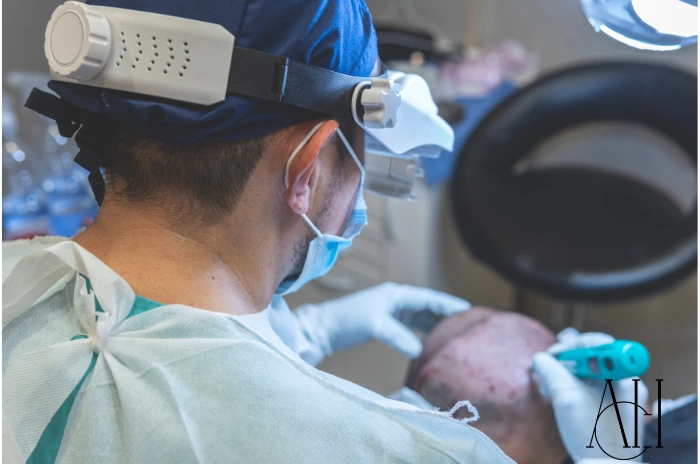
L’anestesia senza ago è adatta a tutti i tipi di tecniche di trapianto di capelli?
Sì, è compatibile con:
-
FUE (estrazione di unità follicolari)
-
DHI (Impianto diretto di capelli)
La somministrazione senza aghi funziona in tutti questi metodi, soprattutto quando si punta a una copertura anestetica poco profonda o mediamente profonda. Per sessioni molto profonde o prolungate, potrebbe essere necessario un uso minimo di aghi.
Quali sono i rischi di un trapianto di capelli senza ago?
Sebbene sia considerata sicura, esistono alcuni rari problemi potenziali:
-
Anestesia incompleta: in rari casi, può essere necessaria una seconda applicazione se non si raggiunge il completo intorpidimento.
-
Arrossamenti o gonfiori minori: Temporanei e si risolvono in poche ore.
-
Malfunzionamento del dispositivo: Raro in cliniche professionali che utilizzano strumenti certificati.
Questi rischi sono minimi rispetto ai benefici complessivi e al comfort offerti dalla tecnica.
Qual è il costo di un trapianto di capelli senza ago?
I prezzi dipendono da diversi fattori:
-
Posizione: Le cliniche in Turchia o in Albania offrono tariffe competitive.
-
Numero di innesti: Più innesti = costo maggiore.
-
Esperienza del chirurgo: I chirurghi migliori possono chiedere un prezzo più alto per la loro esperienza.
-
Metodo di anestesia: Senza ago aggiunge circa il 10-20% al prezzo totale.
In media, un trapianto senza ago può variare da 2.000 a 5.000 euro, a seconda di tutti i fattori sopra elencati.
Domande frequenti (FAQ)
L’anestesia senza ago è davvero indolore?
Sì, in genere i pazienti avvertono solo una rapida sensazione di pressione. Non sentono bruciore o dolore acuto come le iniezioni tradizionali.
Il risultato è lo stesso dell’anestesia tradizionale?
Sì. L’anestesia influisce solo sul comfort, non sui risultati finali della crescita dei capelli o sulla percentuale di successo dell’innesto.
Posso richiedere l’anestesia senza ago in qualsiasi clinica?
Non tutte le cliniche la offrono. Scegli un fornitore specializzato in tecnologie moderne e chiedi specificamente questa opzione.
È sicuro per la pelle sensibile o per i pazienti allergici?
Sì, ma è necessario informare preventivamente la clinica. È possibile effettuare un patch test per verificare la compatibilità.
L’anestesia durerà per tutto l’intervento?
Sì, nella maggior parte dei casi. Se necessario, è possibile riapplicare lo stesso dispositivo senza ago in modo rapido e indolore.
Cosa succede se sento ancora dolore durante la procedura?
Il medico può aumentare l’anestesia all’istante, sia con un dispositivo senza ago sia, in rari casi, con metodi tradizionali.

